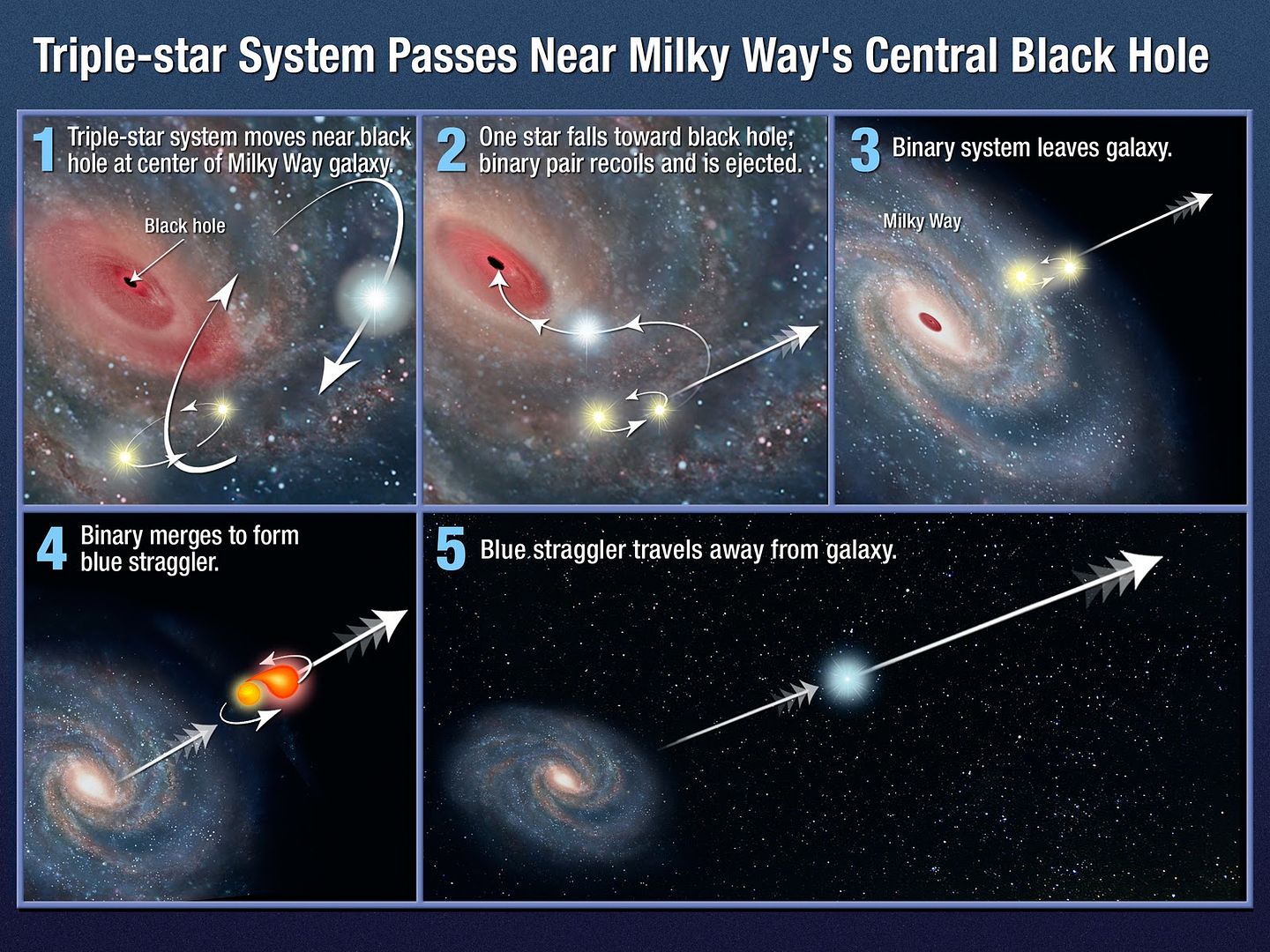
Posted on 01/19/2011 5:30:39 PM PST by ErnstStavroBlofeld
A hundred million years ago, a triple-star system was traveling through the bustling center of our Milky Way galaxy when it made a life-changing misstep. The trio wandered too close to the galaxy's giant black hole, which captured one of the stars and hurled the other two out of the Milky Way. Adding to the stellar game of musical chairs, the two outbound stars merged to form a super-hot, blue star.
This story may seem like science fiction, but astronomers using NASA's Hubble Space Telescope say it is the most likely scenario for a so-called hypervelocity star, known as HE 0437-5439, one of the fastest ever detected. It is blazing across space at a speed of 1.6 million miles (2.5 million kilometers) an hour, three times faster than our Sun's orbital velocity in the Milky Way. Hubble observations confirm that the stellar speedster hails from the Milky Way's core, settling some confusion over where it originally called home.
Most of the roughly 16 known hypervelocity stars, all discovered since 2005, are thought to be exiles from the heart of our galaxy. But this Hubble result is the first direct observation linking a high-flying star to a galactic center origin
(Excerpt) Read more at sciencedaily.com ...
cool
I do not believe anything NASA says or prints anymore. They are known liars with no credibility.
/johnny

There isn’t too much in space that isn’t cool in one way or another.
No, hot.
Did you think to ping Scooter with your opinions?
The interesting part of this is that this could not happen in a two-body system since center of mass momentum, and angular momentum have to be conserved, and requires a three body interaction.
So hot you cool
So cool you hot
Hot you cool so cool
You hot hot hot
So hot you cool
So cool you hot
Hot you cool so cool
You hot hot hot
- from Hot You're Cool by General Public
I agree. More government funded “science” , just like the global warming hoax and the liberal mainstream media , all lies.
Cool, I am saving this as a bookmark.
That’s pretty cool demo of orbital mechanics.
Planetquest has a new toy that has a lot of potential. Its their planet makeover. Its not real detailed but you start with a certain size of planet and star and try to make them habitable.
http://planetquest.jpl.nasa.gov/
ping
Ummm...so you are saying you don’t believe in stars? What are you getting at?
Now, If we could just get ourselves booted out of the UN!
Tweaker stars. Send in the galactic SWAT team.
Habitable for whom?
I mean unless you can create a environment for your genetically engineered and cyberneticly enhanced insectoid race...
I shot this image recently of the star Rigel.

Look closely to the upper right, close to Rigel, you'll see it's companion star about nine seconds of arc away. Rigel is a blue super-giant about 900 light years away.
Rigel is many times the size of our sun. Our sun would appear like a small dot compared to Rigel.
In fact, to put things in perspective, our sun would be about as large as Rigel's companion is to Rigel.
10"SCT-15x5s ISO800 IP filters, 6.3 focal reducer, with a Canon 40D, stacked and combined in DSS.
Disclaimer: Opinions posted on Free Republic are those of the individual posters and do not necessarily represent the opinion of Free Republic or its management. All materials posted herein are protected by copyright law and the exemption for fair use of copyrighted works.